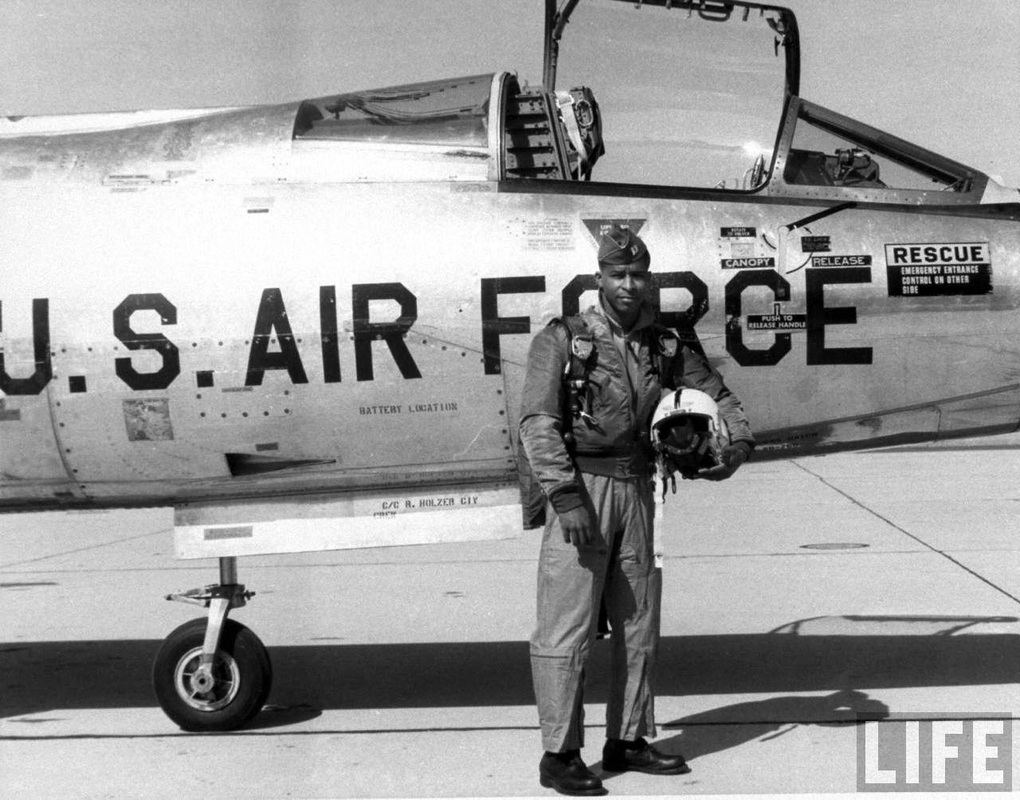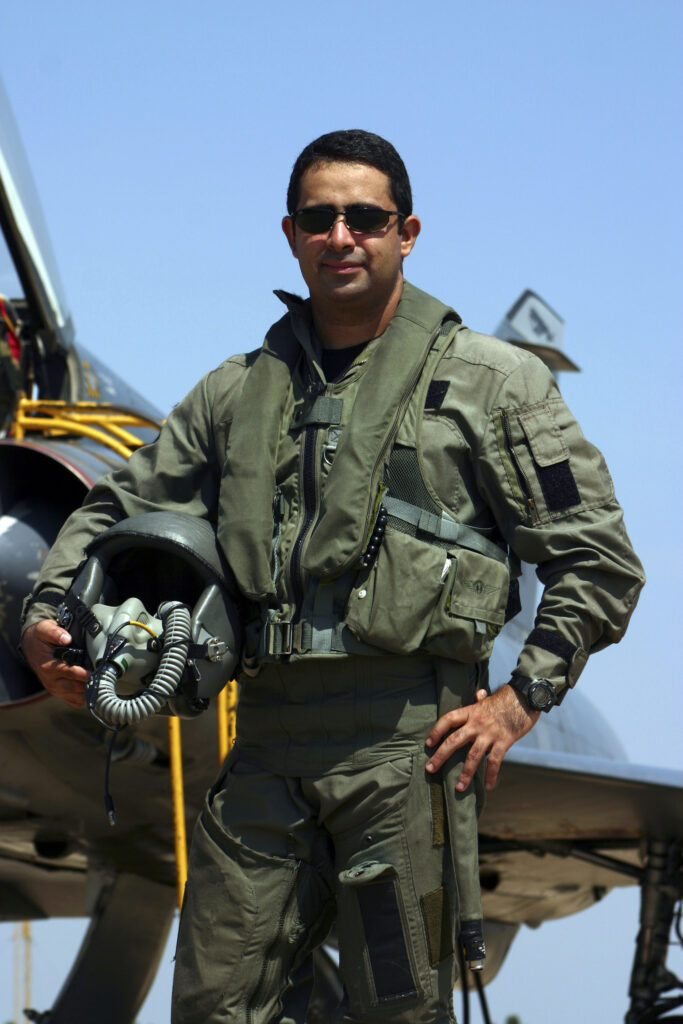Becoming A Pilot
If you feel you have:
- Good teamwork skills
- Strong leadership skills
- Ability to understand technical information
- Ability to remain calm under pressure
- Self-discipline and confidence
- Good decision-making skills
- Can communicate clearly
Then you could become a great pilot and this could be your office in the sky…

Aviation Heros

In June 1967, Lawrence successfully completed the U.S. Air Force Test Pilot School (Class 66B) at Edwards AFB, California. The same month, he was selected by the USAF as an astronaut in the Air Force’s Manned Orbital Laboratory (MOL) program, thus becoming the country’s first black astronaut.
How to Become A Commercial Pilot
Becoming a commercial airline pilot requires certification through various levels. The first level is usually as a student solo and progress from there through private, instrument, commercial, flight instructor (time building) and Airline Transport or ATP. To be hired by an airline, you need to have the ATP certification and 1500 hours of flight experience, typically.
In addition to these certification levels, pilots can often be required to complete additional training, commonly known as Type Certification, for various higher performance aircraft, such as a Boeing 737. As an aspiring pilot, you should keep in mind that good pilots are always learning.
For each level or type of certification, the pilot typically starts with some basic academics. Learning about the principles of flight, regulations, and flying techniques lays the foundation of basic knowledge. Most often this training is referred to as ground school.
Once your academic basic foundation or ground school reaches a certain level of proficiency for the given certification being pursued, practical training is pursued and usually consists of working with a flight instructor to develop your skills as a pilot. Your instructor will work with you to develop your proficiency until you reach a level that you are ready for a check ride or flight test. If you pass your flight test, you will be granted the pilot privileges associated with the certification level you are pursuing.
Military Pilot Options
Joining a branch of the armed forces
One key benefit of choosing this career development option is the cost of the training would, for the most part, be covered through your service. This career development path is very prescriptive and follows a well-laid out and proven process. The aspiring pilot would have to join the desired branch and make a commitment, typically several years of service, before having the option to pursue non-military interests.
Once you join a branch of the military, typically there are some basic training requirements that must be met before the aspiring pilots can apply for a pilot training curriculum. It should be noted that not all applicants will be offered a pilot development track. Of course, if selected, the military provides many flying opportunities, such as paid for training, advanced aircraft, and accrual of experience and flight time which can serve as a strong launching platform to pursue a commercial pilot career once service is complete if so desired. Although many pilots elect to continue their career with the armed forces.
For those interested in exploring an armed forces career development path, more information can be found at the following online resources:
If you are interested in exploring what the military pays, take a look at the Military Pay Tables
If you wish to explore these options in more detail, contact an armed forces recruiter. They can help provide more details concerning requirements, career options, obligations, and more.


Other Pilot Training Programs
There are many opportunities in the civilian market place for pilot training ranging from Universities/Colleges with pilot training programs, Federal Aviation Regulation Part 141 flight schools and Federal Aviation Regulation Part 61 Instruction. Most will offer the aspiring pilot the opportunity to progress from Student pilot, Private Pilot, Commercial Pilot and eventually to Airport Transport Pilot once you achieve about 1,500 hours of flight time experience.
University/College programs typically offer a structured flight training curriculum including, a degree – associate, Bachelors and even masters degrees in addition to pilot certification. In addition, many universities/colleges offer other aviation related career training options which do not necessarily require becoming a certificated pilot. Such related career training options include:
- Aerospace Engineering
- Aircraft Dispatch
- Aircraft Maintenance
- Airport Management
- Air Traffic Controller
- Aviation Business Administration
- Aviation Management
- Maintenance Management
- Unmanned Aerial Systems
If you are interested in exploring a more formal university/college education and training track, The Aircraft Owners and Pilots Association (AOPA) has compiled a searchable directory of more than 250 options with about 165 options specific to pilot certification.
Under Part 141, a flight school must maintain FAA approval for its training curriculum, syllabus and lesson plans, creating a more structured flight training environment. You will find many of the University/College pilot programs flight training programs comply with Part 141 Flight Schools requirements. Participating in a Part 141 flight training program is more a kin to attending high school or college – there’s a structured program you follow, when you complete one section of the curriculum you move on to the next and so on until you “Graduate”. Some key advantages of a Part 141 flight school are a more structured learning environment, a more stable learning curriculum and fewer hours in an airplane to gain a specific certificate. Furthermore, Part 141 students can experience a very face paced training environment but tend to earn the different pilot certificates in less time.
In contrast to a Part 141 school, Part 61 focuses more on the regulations for pilot certification. It outlines the topics covered during flight training and the amount of flight hours required to obtain a specific flight certificate. The training environment is less structured and leaves the individual flight instructor with more latitude and flexibility to adopt the curriculum as he or she seems fit to best serve the student pilot. In addition, the student also has more flexibility in setting the pace and schedule of the training. In other words, as a student under Part 61 training, you can work with your instructor to achieve a training plan that best fits your schedule and needs. While both Part 141 and Part 61 training will ultimately prepare you, the student, for a certifications test, Part 61 does require more aircraft flight time to sit for a particular pilot certification test – private, instrument, commercial, ATP.
While both types of schools are perfectly legitimate and well recognized, they will both get you to your destination but consider the pros and cons of the journey each offer in making your decision. Consider this comparison table from Flying Magazine

I Want To Be A Pilot, Now What?
That’s great! You want to be a pilot and are wondering what to do next. Use this checklist of tasks and activities to help you with your planning. Get excited – be excited! It’s time to dream big!
Career Takeoff Checklist ✔
Click to open and read more about each step on your takeoff checklist.
Explore this website to learn more about career options and use this resource and others to help you understand what a career in aviation could mean to you.
Start a dialog with your friends and family or your school guidance counselor. Explain your desire to pursue a career in aviation and seek their input to help guide you through the process.
There is nothing like piloting a real airplane. Flying high above your neighborhood or the countryside where you live is an experience that will excite and motivate you to be a pilot and make aviation and flying airplanes your career. Reach out to a flying school. If you have not already, here is a link to more information to help you find an opportunity to take flight near you.
If you decide to further explore or pursue an aviation career, then you need a training plan. Use this website to help you understand the training and experience requirements, but then talk to flight schools, other pilots or mechanics, your friends and family and your school guidance counselor. They are resources that can help develop a training plan specific to your situation and needs.
There’s almost nothing better than learning from those with aviation experience. Your local flight school would be a great place to reach out to help connect you with pilots or A&P mechanic.
With a good training and experience development plan in hand, you can start pulling together a budget that supports your training and experience development plan. Evaluate the cost of each element of your training plan. Including opportunities to generate income while gaining valuable experience, such as becoming a flight instructor to accumulate flight hours or working as an A&P apprentice to achieve certification experience. Then use this website and other resources to explore financial aid options to support your plan as needed.
Once you have a clear plan to complete the necessary training and flight time experience or A&P mechanic apprenticeship requirements, develop your career path. Where do you want to start your professional career? Use this website, talk to other aviation professionals and use other resources to explore a career path that meets your needs and desires.
As with any career development journey, there will be hits and misses along the way. Just remember, celebrate the hits and learn from the misses, but stay focused and make it happen for yourself. Your success is all about you!

